Japanese postcards in Meiji era
The other day, I read a book “History of Meiji Prints" (written by Shinichiro Iwakiri, Yoshikawa Kobunkan, 2009) with great interest.
In the book, printmaking is a story that includes the technology used in printing newspapers, magazines, banknotes, etc., and is written as the history of printing in the Meiji era.
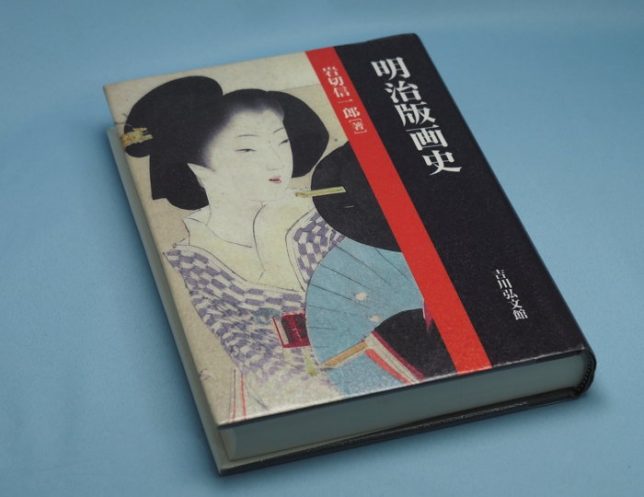
For example, the “25th Anniversary Celebration of the Universal Postal Union" issued by the Ministry of Communications in 1902 was very popular, and around 1897, the picture postcards became a boom, and “letter magazines" and “postcard literature". (1904), “Postcard Club", “Monthly Postcard", “Postcard New Magazine" (1905), etc. were published … There are many interesting stories.
The Ministry of Communications has also published the “Meiji 37 War Commemorative Postcard" (1904). The Meiji 37 War means the Russo-Japanese War.
I posted a sentence like that on Twitter. When I searched for “postcards" in the National Diet Library Digital Collection, I found a lot. It’s interesting, so I browsed some of them.
Perhaps I will just cite examples and not analyze them, but please read on.
The word “picture postcard" has been found in domestic books since 1900.
I can’t see the contents of the materials limited to the National Diet Library from my home, but I found that the table of contents of the 1900 magazine Chuo-koron says “picture postcard".
(For reference, the search results are posted. In Japanese, there are both kanji and kana notations, so I searched with two words. This search included materials limited to the National Diet Library. It came out in the 1870~79 with eight articles search, but all of them were overseas-made picture postcard sent by Chomin Nakae from overseas to Japan.)
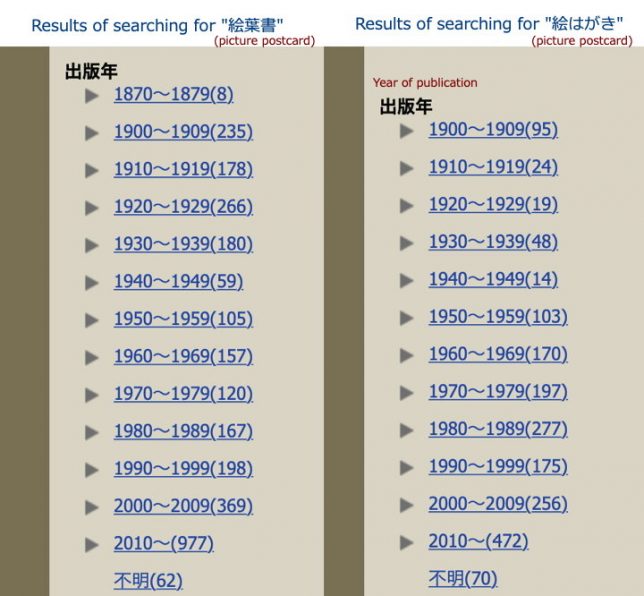
Then, I will quote from some materials. All the original text is in Japanese and I translated it.
Although it is different from the order in which it was actually published, there was a descriptive text, so I will post it first.
There is a book “Origin of Meiji Things" published in 1908 that summarizes the beginnings of various things. The ones related to the postal system are extracted below.
“The beginning of a commemorative stamp
The Ministry of Communications issued commemorative postage stamps in March 1894, when the Emperor’s silver wedding anniversary was celebrated. These are large horizontal two types, red stamp (2 sen) and blue stamp (5 sen). (Currency unit at that time, 1 yen = 100 sen)
The beginning of private postcards
On October 1, 1900, the issuance of private postcards was permitted by the Ordinance of the Ministry of Communications.
In “Kinsei Shonen (modern boys)" Vol. 1, No. 9, published on the 5th of the same month, a colored stone lithograph postcard of a picture of two boys blowing soap bubbles (Kendo Ishii’s plan, Chushu Kojima’s painting) was posted as an appendix . This is the beginning of private postcards.
During the Russo-Japanese War of 1904-05, the use of picture postcards to communicate with foreign officers and soldiers caused a picture postcard boom among lovers. However, with the end of the war, it became a little obsolete, and instead the commemorative postmark became a temporary boom, but it has now declined.
Beginning of commemorative picture postcards
The beginning of the commemorative picture postcard issued by the Ministry of Communications was the release of a postcard commemorating the 25th anniversary of the membership of the Universal Postal Union on June 20, 1902. The commemorative postmark also started at this time. Around December 1905, when the boom of commemorative picture postcards was at its peak, those who tried to buy it were injured, and the market price was over a dozen yen."
“Origin of Meiji Things" January 1908, by Ishii Kendo, Kyonando.
The beginning of private picture postcard is “Kendo Ishii’s plan, Chushu Kojima’s drawing", but I think Kendo Ishii is the author of this book. I’m worried is it self-praise.
Anyway, it seems certain that picture postcards were a big boom during the Russo-Japanese War.
Next, I will go back a little and write the materials in chronological order.
It is a book “Latest Advertising Method" published in 1903 (Meiji 36).
“Chapter 11 Picture Postcards
Picture postcards, or private postcards, were born last year in accordance with the Ministry of Communications Ordinance No. 42, Postal Regulation No. 18.
The primary purpose of the government’s permission to issue this postcard is to introduce our art culture overseas, actively encourage foreigners to visit, and further expand the sales channels of our crafts to raise financial resources. Even today, there are still very few products that can achieve this lofty idea of the government. In other words, it is rare to produce artistic postcards that are in the taste of Westerners."
“Latest Advertising Method" May 1868, by Shigeki Yamazaki, Hobunkan
It seems that the ministerial ordinance of the Ministry of Communications allowed the issuance of postcards for one purpose (although I don’t know if it was the main purpose) to promote Japan overseas.
Next, the relationship with overseas picture postcards.
Sazanami Iwaya, a writer and children’s literary writer who was active from the Meiji era to the Taisho era, wrote about German picture postcards.
“German picture postcard
It will be the second year of the New Year since the picture postcards were made in Japan. I think that next New Year’s postcards will have various types. Perhaps there are rabbit drawings associated with the year of the rabbit, followed by the new year’s sea. Also, I can’t wait to see various beauty such as first sunrise, first crow, Fukujusou, and Shochikubai (pine, bamboo and plum trees).
I have been in Germany for the past two years, and when I spread out the postcards I was able to collect and tried to classify them for trial, there were a large number of them.
By the way, it seems that picture postcards were published for the first time in Germany about ten years ago. “
“Overseas souvenirs of Sazanami, Volume 2" May 1903, written by Sazanami Iwaya, Hakubunkan.
After this, he categorized the postcards he received in Germany into the following 10 types.
Historic sites, advertising means, portrait photography, reproduction of artworks, commemorative event, seasonal things, artist handwriting, funny satire, people’s Life, nature.
And finally, he wrote a request that “Japanese postcards are of poor paper quality and I hope to improve them."
Next, “Poetic new postcard guidebook" published in 1905. It was edited by “Japan Postcard Exchange Association". I wonder that there was such an organization.
The origin of the postcards was also written in them.
“The origin of picture postcards
Picture postcards, which have become popular all over the world in recent years, originated when German industrialists gave them to their customers as advertisements. The postcards attracted the attention of curious people and were surprisingly effective as advertisements, so various manufacturers and stores competed with each other to make pictures of their factories and stores and spread them in all directions. This was only seventeen or eighteen years ago, so the history of picture postcards is still very young."
“Poetic new postcard guidebook", 1905, Japan Postcard Exchange Association, Bungaku-doshi-kai.
The “Guidebook of Picture Postcards," also published in 1905, seems strangely powerful.
The first page of the preface is illegible, but the second half is readable.
“Picture postcards are more difficult to write than ordinary postcards, and depending on how skillful you are, you can either add beauty to the picture or damage the beauty of the picture. This book is published in order to teach people how to write picture postcards."
“Guidebook of Picture Postcards", April 1905, by Isao Kuroyanagi, Bunroku-do.
I am afraid that it have to work hard to master this. Maybe I have to make an effort.
The following image is from an advertisement at the end of this book, it seems that they also sold postcards like this one.
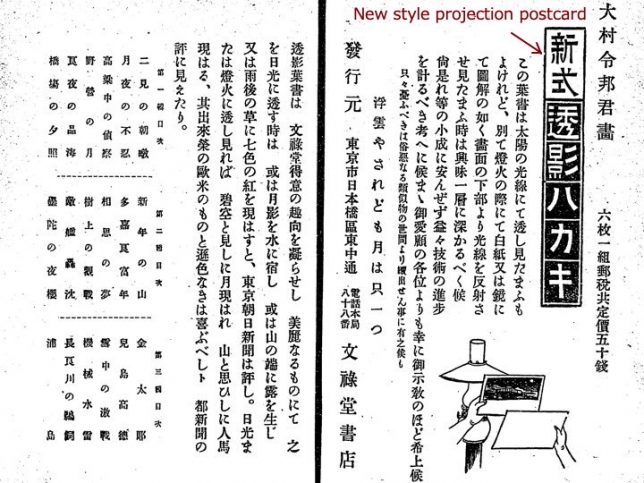
It is a postcard with a picture that emerges when you look through it with the sun or a lamp. I wonder if it is similar to the watermark on paper money. I’m not sure. “It says, “Set of six, postage tax included, list price 50 sen. It seems that “postal tax" used to be a term for postage.
Next is a book that advertises about various businesses. So basically, it’s an exaggeration of what looks good. So, on the contrary, I think that the first line, “Postcards are out of fashion," was actually the public’s opinion.
“Picture Postcard Seller
It is said that picture postcards have become quite out of fashion, but despite changes in designs and designs, picture postcards will never go out of style. Some people may say that because this business has not been mentioned in any of the past books on the business, if the postcard becomes out of fashion, the business will no longer be viable.
But you don’t have to worry about that. If you have five yen in capital now, you can support your family of two or three by selling the postcards on the street day or night, it’s very interesting."
“The Secret of Small Capital Business", November 1908, by Hisame Ishigaki, Publishers Association.
Lastly, I’m going to go back a bit in the publication date, but I’m posting this because it is funny.
“A picture postcard of a beautiful woman
Since picture postcards became popular, many fraudsters of this kind have appeared one after another. They advertise in various newspapers that they are selling five pictures or postcard of beautiful women for tens sen (sen = 1/100 yen). The advertisements were written in such a way that one could imagine them to be spring paintings of nude bodies, taking advantage of the weakness of people’s sexual desire. People in the countryside would get curious and send money to see what kind of things they could find, but they would be fooled by the extremely uninteresting pictures and postcards they would receive."
“The Inside Story of Tokyo Injustice", March 1907, by Muho Iwamoto, Takagi Shobo.
I guess there are always scams like this.
I just have picked up a few articles that caught my attention. Especially since the number of books on picture postcards has increased dramatically since 1905, it must have been a boom.
I’ve only looked through a small part of the National Diet Library Digital Collection, so I would like to read other books as well.

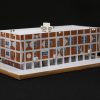
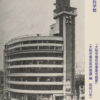
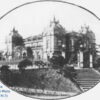
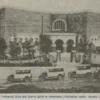
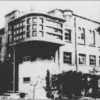
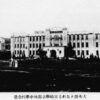
Recent Comments